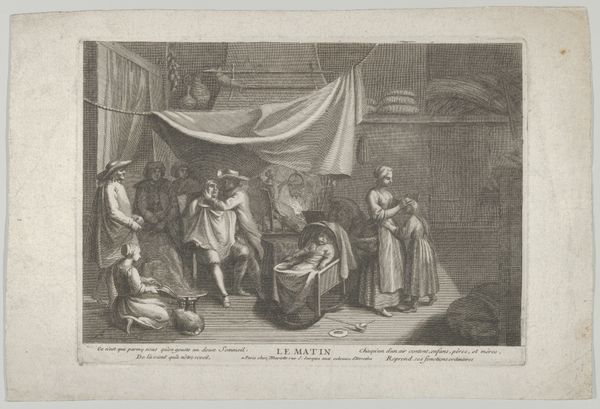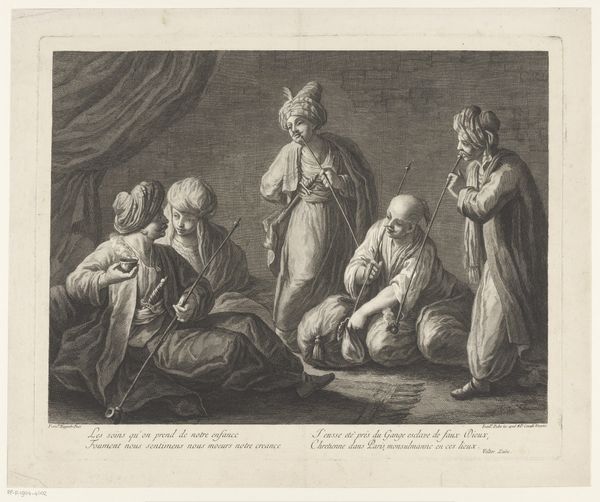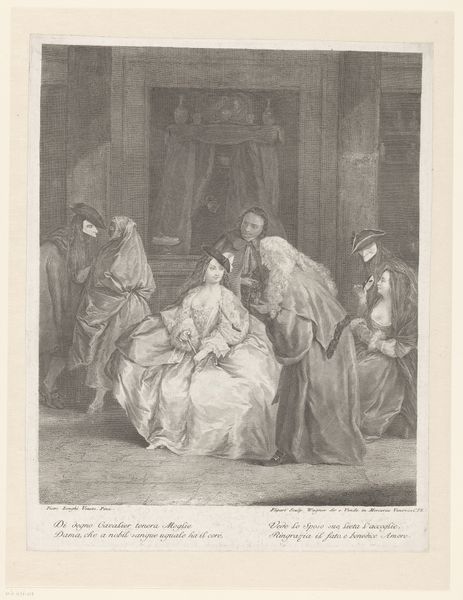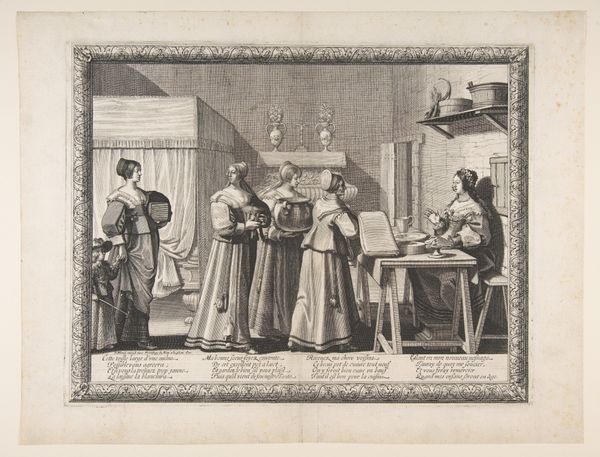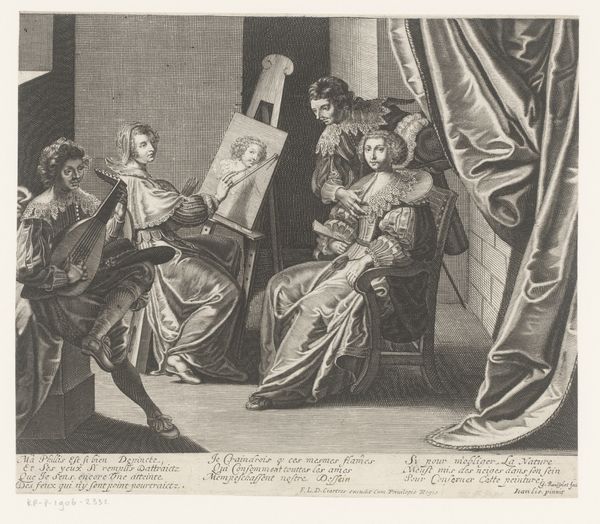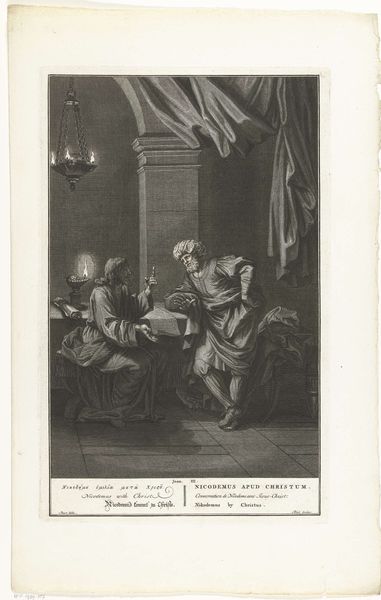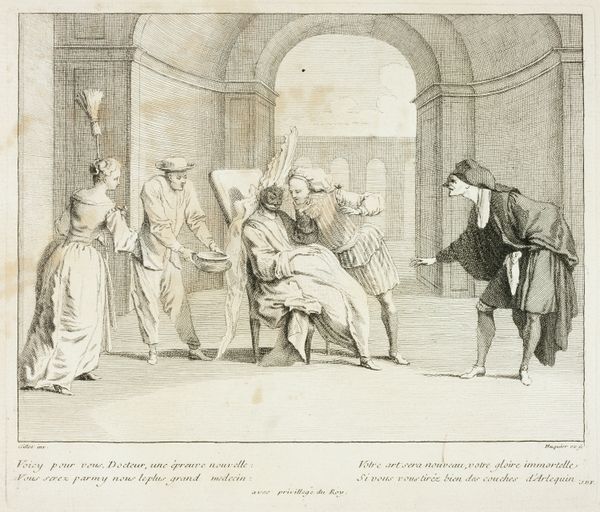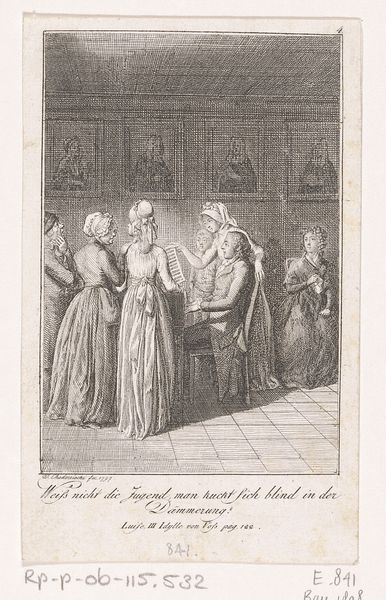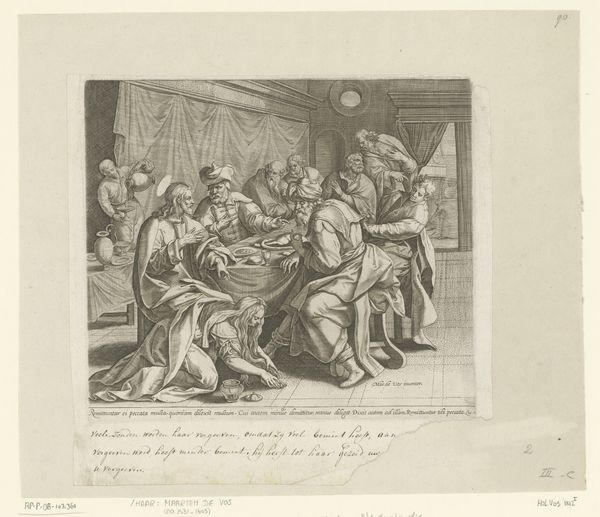
print, engraving
#
narrative-art
#
baroque
# print
#
figuration
#
history-painting
#
engraving
Dimensions: height 303 mm, width 436 mm
Copyright: Rijks Museum: Open Domain
Curator: Here we have "The Birth and Naming of John the Baptist," an engraving dating back to 1617. It's currently held at the Rijksmuseum. Editor: Well, isn't that domestic! I immediately notice how confined it feels—almost claustrophobic, with so many figures packed into a single room. Like a stage play frozen in time. Curator: Yes, stage-like is a fitting observation! This piece adheres to the baroque style. Look at the drama, the focus on a specific, highly significant narrative moment. There’s the weight of history being made. Editor: I find the level of detail quite astonishing, especially considering it’s an engraving. The cross-hatching to create shading… It’s incredibly labor-intensive, don't you think? You can practically feel the texture of the fabrics. It reminds me of the exquisite detail of etchings of ancient roman or greek artifacts! Curator: Precisely! Every symbol carries meaning here. Note the central woman presenting the newborn—likely a midwife or servant—versus Zacharias, the father, recording the child’s divinely ordained name, John. One showing and offering new life while the other affirms it as his calling in history. Editor: Absolutely. But there's also this interesting sense of emotional detachment. Everyone seems to be performing their roles. What do you make of it? Is it the style? Curator: It's not just style; it speaks to the perception of historical or biblical figures. They exist to play roles within grand narratives that are separate from daily experiences. In the engraving, what prevails are symbols. For instance, childbirth isn’t merely biological, but a sacred fulfillment. Naming confirms destiny. These aren't spontaneous events, but ordained moments within a framework of spiritual history. Editor: I can appreciate the intellectual depth there, seeing past immediate feeling toward those timeless ideals they are made to represent, but something feels a little lifeless in there. So, with its rather cold tone, how does the piece fare today? Curator: It is successful if it calls on its viewers to appreciate the weight of traditions, to perceive significance in everyday actions, not merely their literal meaning. Editor: You know what, it reminds me that even seemingly ordinary events—birth, naming—can be filled with incredible consequence and expectation. Curator: Exactly. We project forward by anchoring ourselves to symbolic narratives from our past.
Comments
No comments
Be the first to comment and join the conversation on the ultimate creative platform.
